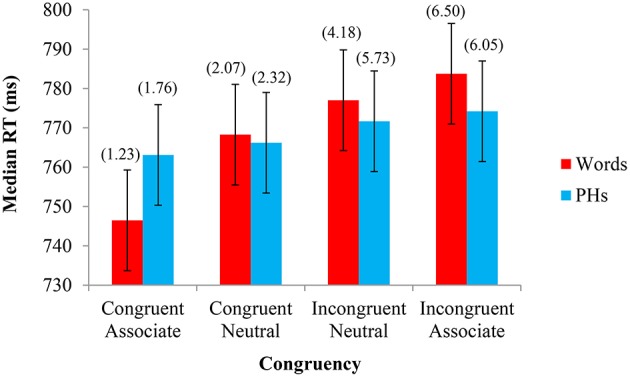Figure 4.

Experiment 4—Color associated stimuli: Median response time (RT) and percent errors (above) in naming the font color as a function of Letter String Type (word, PH) and Congruency (congruent, neutral congruent, neutral incongruent, incongruent). The 95% confidence intervals (shown here for RT by the error bars attached to each data point) indicate that, for PHs there was no significant difference in the time taken to respond to stimuli across any of the four congruency conditions. There was no difference in responding time, however, between the two neutral conditions, or between the incongruent neutral and incongruent associate conditions. The percent error confidence interval was ± 0.979%. Paired-samples t-tests support the 95% CIs for Experiment 1, whereby if the CIs reflected a significant difference, so too did the t-tests, all t's(23) > 2.443, p's < 0.024. Supporting the critical difference for words between Congruent Associate and Congruent Neutral conditions, a paired-samples t-test was also significant, t(23) = 3.31, p = 0.003. Also supporting this effect with a Bayesian Analysis, where prior odds were set to 1 for both null and alternative hypotheses, the Bayes factor of 11.98 constituted a posterior probability of 0.923 for the alternative hypothesis, and thus strong evidence for this facilitation effect.
